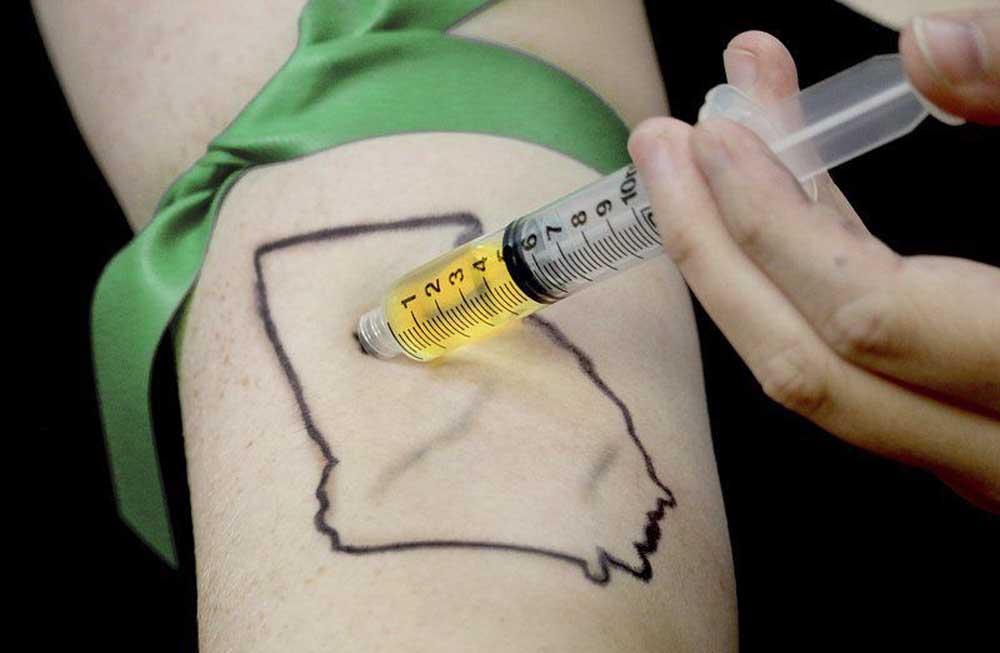Where’s the Heroin?
Published 6:30 am Sunday, October 16, 2016

- Photo Illustration by Derrek Vaughn | The Valdosta Daily TimesNorth Georgia faces a heroin problem but South Georgia has been spared what parts of the nation call an epidemic.
VALDOSTA, Ga. — A traffic stop along Interstate 75 led to the confiscation of a drug that’s rarely seen in Valdosta-Lowndes County.
Heroin.
Trending
Several metropolitan cities and rural regions throughout the nation have reported heroin as an epidemic.
“More Americans now die every year from drug overdoses than they do in motor vehicle crashes – and most of those involve opioids and heroin,” according to the Middle District of Georgia United States Attorney Office last month as part of National Prescription Opioid and Heroin Awareness Week.
Yet, South Georgia law-enforcement officials say a person is more likely to find marijuana and cocaine in the city; marijuana and meth in the county. Synthetic drugs can be found in both jurisdictions to a lesser degree. Prescription drug abuse can also be found in the city and county.
But heroin, an opioid pain killer, is reportedly scarce in the region.
Valdosta Police Cmdr. Leslie Manahan and Lowndes County Sheriff’s Office Capt. Stryde Jones said their respective departments rarely work heroin cases. When they do see a heroin case, it is typically related to someone from outside of the area.
Such as the case along I-75 in late September.
Trending
Following a speeding stop, deputies reported finding 19 grams of heroin along with five grams total of crack and powder cocaine, a bag of Ecstasy pills and a bag of Alprazolam pills, according to a Lowndes County Sheriff’s Office report. Scales “commonly used for weighing drugs” and a Smith & Wesson 9-millimeter handgun reported stolen from Marion County, Fla., were also found in the stopped Pontiac Grand Prix.
Deyonco Lindsey Jackson, 29, of Orlando, Fla., was charged with trafficking in heroin, possession of cocaine with the intent to distribute, possession of ecstasy with the intent to distribute, possession of alprazolam with the intent to distribute, possession of marijuana, theft by receiving stolen property, speeding, possession of tools for the commission of a crime, possession of a firearm by a convicted felon, according to a report from the sheriff’s office.
Jones said it was the first heroin-related case he could recall the sheriff’s office working in a while. The captain estimated the sheriff’s office works about two or three heroin-related cases per year.
“Our regional problem isn’t heroin,” Jones said. “It’s meth.”
Why? Neither he nor Manahan could say.
Heroin is relatively inexpensive. In pockets of North Georgia and in cities in other Eastern states, heroin has become epidemic.
News reports in other regions are rife with young people dying of heroin overdoses, thefts and acts of violence related to heroin use, people hospitalized for heroin addiction.
In October 2015, when President Barack Obama wanted to focus on the drug, he visited Charleston, W.Va., described by Time magazine as the “center of (the) heroin epidemic.”
“West Virginia leads the nation in drug overdose deaths at a rate of 33.5 per 100,000 people — a little over twice the national average,” according to the 2015 Time magazine article. “A … report by the state’s Health Statistics Center shows about 2,900 West Virginians have overdosed on prescription painkillers in the past five years.”
While Charleston, W.Va., police officers carry Naloxone, a medication which can reverse the impact of an overdose, South Georgia officers do not, according to the VPD and LCSO. They do not see a similar need to carry Naloxone.
Yet, even with law-enforcement reporting a relatively small number of heroin-related cases, Valdosta-Lowndes County has experienced tragedy related to the drug.
In a health report released by OASIS late last month, one person died of a heroin overdose in Lowndes County in 2015.
OASIS is the Online Analytical Statistical Information System within the Georgia Department of Public Health.
The 2015 death was the only heroin-related death in the county since 2010, said Courtney Sheeley, communications specialist, South Health District.
Behavioral Health Services of South Georgia reports working with clients addicted to or abusing meth and synthetic drugs — or “synths” — such as molly or flakka, but only an occasional heroin addict, said Berinda Nwakamma, the agency’s engagement/marketing coordinator.
“Heroin hasn’t made the great migration here,” she said.
Nwakamma said heroin possibly hasn’t become a problem in South Georgia because of the easier access to and availability of other drugs such as meth and synths.
Valdosta-Lowndes County is not immune to the possibility of a heroin problem given the proximity to Florida, the interstate, a university, a military base, she said.
Other South Georgia communities have already indicated signs of a growing heroin problem. Albany-Dougherty County law-enforcement reported at the end of September seeing an increase of heroin use in Metro Albany, according to a WALB report.
But law-enforcement and health officials agree. Heroin will hopefully stay out of the Valdosta-Lowndes County area or at least keep moving on along the interstate.


